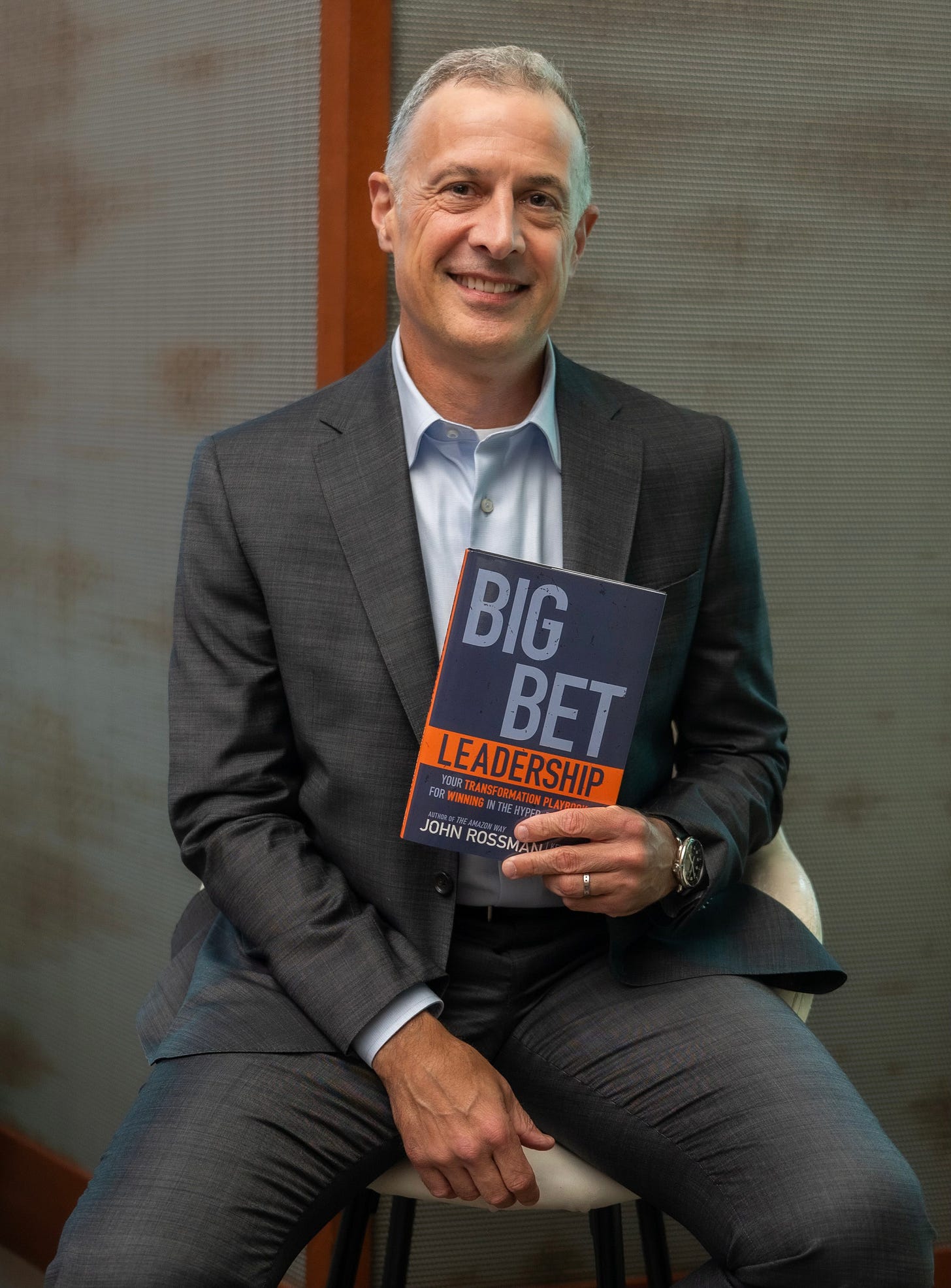Becoming Legendary — Fighting Off Complacency and Mediocrity
Success breeds complacency. Complacency breeds failure. Only the paranoid survive — Andy Grove, former CEO of Intel
What Separates Legendary Companies from the Merely Good?
It’s a question that cuts deep into the heart of every serious leader.
It’s not just about vision. Not just execution. And it’s not luck.
Legendary companies distinguish themselves the same way legendary sports teams do—not by a single game or even a single season, but by sustained, repeatable excellence. Longevity in winning. The ability to reinvent, reload, and reignite, again and again. They build a durable system for maintaining competitive advantage, long after the initial spark has faded.
And yet, if we’re honest—painfully honest—we have to admit that most companies fail at this. Miserably.
The Harsh Truth About Innovation and Competitive Advantage
Here’s the brutal data:
73% of enterprises failed to derive any business value from their digital transformation efforts.
80-90% of executives claim innovation is a top priority, yet only 6% are satisfied with their innovation performance.
This isn’t a recent phenomenon. These figures have been consistent for two decades. Twenty years of hand-wringing. Twenty years of slide decks. Twenty years of digital strategies that didn’t deliver.
The conclusion? It’s not a technology problem. It’s not a budget problem. It’s not a talent problem.
It’s a leadership problem.
Why We Lose Our Edge
Why do great companies—sometimes legendary companies—lose their edge?
Because the enemy is not external. It’s not the competition. It’s not AI. It’s not China or a scrappy startup or a regulatory shift.
The enemy is within.
Complacency is the silent killer. And it takes many forms:
Incrementalism – A bias toward small, safe improvements instead of bold, transformative moves. It creates the illusion of progress while avoiding real risk—and in fast-moving markets, it quietly leads to stagnation and competitive decline.
The Innovator’s Dilemma – A paradox identified by Clayton Christensen, where leading companies fail to embrace disruptive innovation—not because they lack insight or resources, but because their existing success makes it difficult to take the necessary risks.
Short-Termism – The pressure to deliver immediate quarterly results at the expense of long-term value. It drives leaders to prioritize quarterly targets over strategic bets—even when they are sacrificing long-term value.
Incentive Systems – Misaligned, risk-averse compensation models reinforcing incremental and short-term results.
Loss Aversion — Humans are wired to avoid losses more strongly than we seek equivalent gains. This bias leads leaders and teams to play it safe, protect the status quo, and resist bold moves—even when the upside is substantial. It’s a powerful psychological barrier to innovation and transformation.
And finally, as the Oracle of Omaha, Warren Buffett outlines;
The ABCs of Corporate Decay – Arrogance, Bureaucracy, and Complacency.
Every one of these dynamics is human. Understandable. And incredibly dangerous.
Legendary companies aren’t immune to these forces. They’ve simply built systems to fight them intentionally.
Disruption Isn’t Historical — It’s Here. Now.
When we talk about disruption, too many people treat it like a chapter in a business school case study.
Kodak. Blockbuster. Xerox PARC. Circuit City. They were category leaders. They had the innovation. The patents. The talent. They had competitive advantage.
And yet—they fell.
Not because they didn’t see the future, but because they didn’t take bold enough bets to act on it.
They played it safe. They played defense.
But here’s the point: disruption is not a past-tense topic.
It is happening right now—to some of the most iconic companies in the world.
Nike: Once the king of brand and innovation, now navigating a growing disconnect with its core consumers.
Boeing: Once a symbol of American engineering excellence, now tarnished by safety and quality crises.
Intel: Once the unquestioned leader in chips, now scrambling to catch up in a race it used to dominate.
GE: A cautionary tale of conglomerate complexity and diluted focus.
Starbucks: Losing its edge in speed, customer experience, and cultural resonance.
Even the best brands are not immune. Howard Schultz himself recently said of Starbucks:
“They lose the ability to be on offense. And the worst thing that a company can do, like a sports team, is start playing defense because you're afraid to fail. That is a disease. Not unlike another disease which has happened in Starbucks, which is hubris.”
Complacency is the Real Opponent
If you remember one idea from this newsletter, let it be this:
Competitive advantage is a fast-fleeting asset. And the enemy is not the competition. The enemy is our own complacency.
Complacency is the gravitational force that pulls every company, every team, and every leader toward mediocrity.
It’s mediocrity and complacency dressed up as an unambitious strategy. It’s hubris masquerading as capability. And it is absolutely lethal in a world moving as fast as ours is today—especially in the age of AI, where competitive advantages can be mimicked, commoditized, and outpaced in record time.
The Call to Become Legendary
So what do we do with this?
We choose to fight. And not just fight, but lead with a playbook that is built for this era of disruption and volatility.
That’s why I wrote The Amazon Way, Think Like Amazon and Big Bet Leadership.
Listen to the authors of Big Bet Leadership, John Rossman and Kevin McCaffrey, tell you about their inspiration and mission for the book
To develop the leadership skills, strategies and mechanisms for:
Confronting complacency,
Making decisive, bold moves, and
Sustaining relevance and leadership through reinvention.
Because becoming legendary doesn’t happen by accident.
Becoming legendary requires discipline. It requires systems. It requires brutal honesty.
And above all, it requires the will to face the real enemy—ourselves.
That’s how you become legendary.
Let’s get to work.
If you need inspiration and technique have John Rossman come talk to your team!
Thanks for Listening
Last week, I had the opportunity to speak at two exceptional events.
The first was RUSH, the inaugural flagship symposium hosted by Radix in Houston—an impressive gathering led by a global technology services powerhouse.
The second was Info-Tech Research Group’s Live 25 in Las Vegas, where I joined forward-thinking technology and IT leaders tackling today’s most urgent technology transformation challenges like IT operating model transformations and AI strategies.
Both events featured outstanding audiences, rich conversations, and a shared commitment to pushing beyond the status quo. It’s a privilege to be part of these dialogues—and to keep building relationships with leaders who are serious about becoming legendary.
Onward,
John
Author of The Amazon Way, Think Like Amazon, and Big Bet Leadership
Advisor | Keynote Speaker | Early Amazon Executive|
See John in Action: www.bookjohnrossman.com





